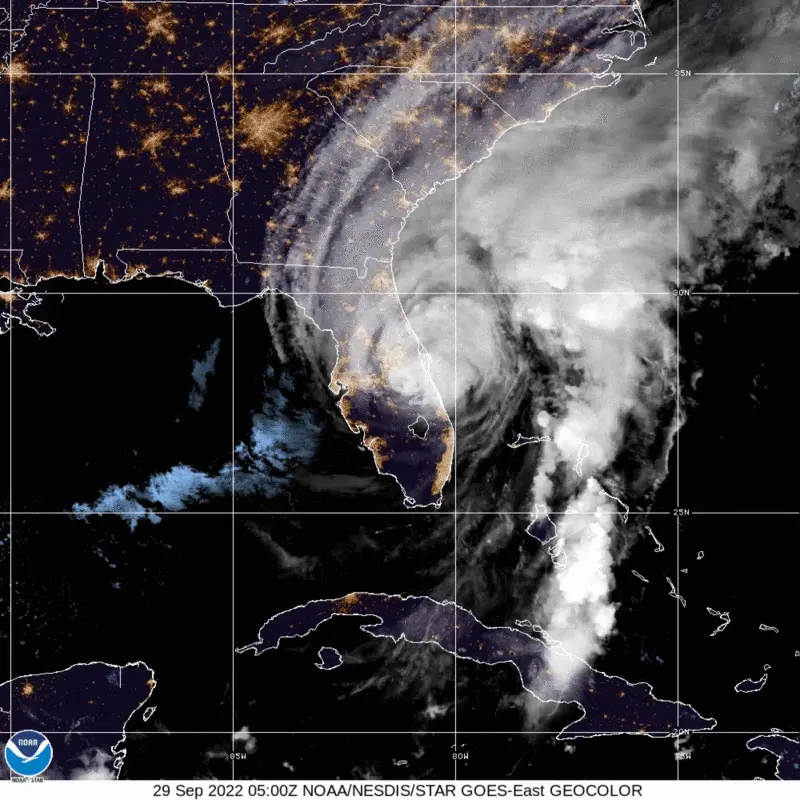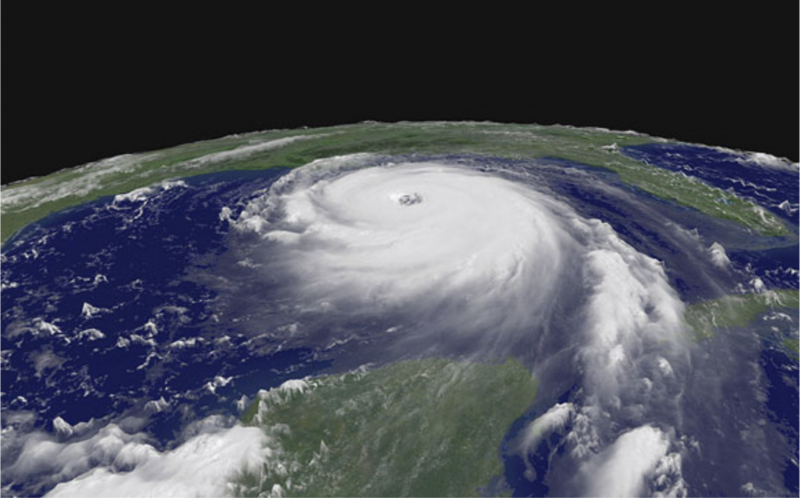
Here’s the 2024 Atlantic hurricane outlook
The 2024 Atlantic hurricane season officially starts June 1 and extends through November 30. NOAA’s Climate Prediction Center will release their hurricane season outlook for this year in late May. Meanwhile, Colorado State University (CSU) also puts out a hurricane outlook, which it issued on April 4. According to CSU, it will be a busy hurricane season in the Atlantic! CSU is predicting 23 named storms, 11 hurricanes and five major hurricanes with winds 111 mph (179 km/h) or higher. To compare, an average hurricane season sees 14 named storms, seven hurricanes and three major hurricanes. So if CSU is right, we’ll blow through the 21 names on this year’s list.
Why is CSU predicting an “extremely active” year? According to its press release:
The team cites record warm tropical and eastern subtropical Atlantic sea surface temperatures as a primary factor. … A very warm Atlantic favors an above-average season, since a hurricane’s fuel source is warm ocean water.
A developing La Niña also plays a part in this season being:
… the highest prediction for hurricanes that CSU has ever issued with their April outlook.
The team plans to update their outlook again on June 11, July 9 and August 6.
Will NOAA’s outlook for the 2024 season agree? We’ll find out in late May!
La Niña vs. El Niño
Before 2024, we had three La Niña years in a row. But now, El Niño is weakening, with the expectation that La Niña will return either by late summer or fall.
So, La Niña could provide a boost to hurricanes in the Atlantic. According to Climate.gov:
El Niño favors stronger hurricane activity in the central and eastern Pacific basins, and suppresses it in the Atlantic basin. Conversely, La Niña suppresses hurricane activity in the central and eastern Pacific basins, and enhances it in the Atlantic basin.
If you live near the Atlantic basin, you should keep up-to-date with forecasts from the National Hurricane Center.
Learn more about how to prepare for hurricane season.
Where do hurricane names come from?
Meteorologists long ago learned that naming tropical storms and hurricanes helps people remember the storms, communicate about them more effectively, and consequently stay safer if and when a particular storm strikes a coast.
These experts assign names to tropical storms according to an approved list before the start of each hurricane season. The U.S. National Hurricane Center started this practice in the early 1950s. Now, the World Meteorological Organization (WMO) generates and maintains the list of hurricane names.
Here are the hurricane names for 2024
Atlantic hurricane names (season runs from June 1 to November 30) are: Alberto, Beryl, Chris, Debby, Ernesto, Francine, Gordon, Helene, Isaac, Joyce, Kirk, Leslie, Milton, Nadine, Oscar, Patty, Rafael, Sara, Tony, Valerie and William.
Eastern North Pacific hurricane names (season runs from May 15 to November 30) are: Aletta, Bud, Carlotta, Daniel, Emilia, Fabio, Gilma, Hector, Ileana, John, Kristy, Lane, Miriam, Norman, Olivia, Paul, Rosa, Sergio, Tara, Vicente, Willa, Xavier, Yolanda and Zeke.
If you’re interested, you can view those names, and names for upcoming years, at the U.S. National Hurricane Center.

How and why did hurricanes first begin receiving names?
While people have been naming major storms for hundreds of years, most hurricanes originally had a designation using a system of latitude-longitude numbers. This was useful to meteorologists trying to track these storms. Unfortunately, this system confused people living on coasts seeking hurricane information.
In the early 1950s, the U.S. National Hurricane Center first developed a formal practice for storm naming for the Atlantic Ocean. At that time, storms got their names according to a phonetic alphabet (e.g., Able, Baker, Charlie) and the names used were the same for each hurricane season. In other words, the first hurricane of a season was always named “Able,” the second “Baker,” and so on.
In 1953, to avoid the repetitive use of names, the National Weather Service revised the system to give storms female names. By doing this, the National Weather Service was mimicking the habit of naval meteorologists, who named the storms after women, much as ships at sea traditionally had female names.
In 1978–1979, they revised the system again to include both female and male hurricane names.
See the complete history of naming hurricanes, including retired names, from NOAA.
When does a storm receive a name?
Tropical storms get a name when they display a rotating circulation pattern and wind speeds reach 39 miles per hour (63 kilometers per hour). A tropical storm develops into a hurricane when wind speeds go above 74 mph (119 km/h).
Experts have developed lists of hurricane names for many of the major ocean basins around the world. Today, there are six lists of hurricane names in use for Atlantic Ocean and Eastern North Pacific storms. These lists rotate, one each year. So that means the list of this year’s hurricane names for each basin will come up again six years from now.
However, there’s an exception to this practice. The World Meteorological Organization retires the names of extremely damaging hurricanes for legal, cultural sensitivity and historical reasons. For example, they retired the name Katrina in 2005 following the devastating impact that Hurricane Katrina had on New Orleans. In 2022, the World Meteorological Organization Hurricane Committee retired the names Fiona and Ian.

Bottom line: Colorado State University has released its Atlantic hurricane outlook for the upcoming season. Read more here and get the list of 2024’s hurricane names.











